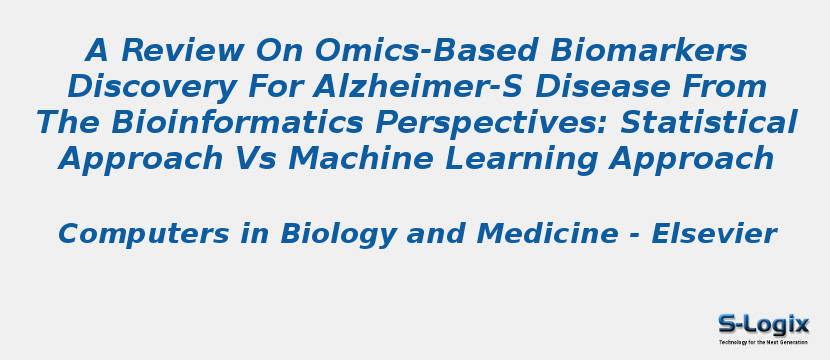Research Area: Machine Learning
Alzheimer-s Disease (AD) is a neurodegenerative disease that affects cognition and is the most common cause of dementia in the elderly. As the number of elderly individuals increases globally, the incidence and prevalence of AD are expected to increase. At present, AD is diagnosed clinically, according to accepted criteria. The essential elements in the diagnosis of AD include a patients history, a physical examination and neuropsychological testing, in addition to appropriate investigations such as neuroimaging. The omics-based approach is an emerging field of study that may not only aid in the diagnosis of AD but also facilitate the exploration of factors that influence the development of the disease. Omics techniques, including genomics, transcriptomics, proteomics and metabolomics, may reveal the pathways that lead to neuronal death and identify biomolecular markers associated with AD. This will further facilitate an understanding of AD neuropathology. In this review, omics-based approaches that were implemented in studies on AD were assessed from a bioinformatics perspective. Current state-of-the-art statistical and machine learning approaches used in the single omics analysis of AD were compared based on correlations of variants, differential expression, functional analysis and network analysis. This was followed by a review of the approaches used in the integration and analysis of multi-omics of AD. The strengths and limitations of multi-omics analysis methods were explored and the issues and challenges associated with omics studies of AD were highlighted. Lastly, future studies in this area of research were justified.
Keywords:
Author(s) Name: Mei Sze Tan, Phaik-Leng Cheah, Ai-Vyrn Chin, Lai-Meng Looi, Siow-Wee Chang
Journal name: Computers in Biology and Medicine
Conferrence name:
Publisher name: Elsevier
DOI: 10.1016/j.compbiomed.2021.104947
Volume Information: Volume 139, December 2021, 104947
